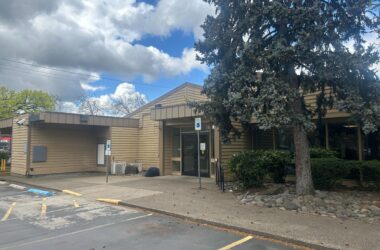 IMAGE PROVIDED
IMAGE PROVIDED
The spike in electricity bills seen by some Emerald People’s Utility District (EPUD) customers this winter has caused quite the clamour, and EPUD General Manager Scott Coe said there are two facets that come into play: a cold winter and the introduction of the new tiered rate design.
”We had a cold December,” Coe said. ”People didn’t realize how cold it was because it didn’t snow or ice and we didn’t have power outages -but it was cold. So people’s bills were going to be higher anyway from the cold weather, and there’s just that much more from…those higher users.”
So people are using more electricity to keep their homes warm, all while this new rate design is underway for the first winter since its inception, causing higher bills for some.
”I’d be mad, too – $700 a month bill, $400 a month electric bill – there’s some big bills out there,” Coe said. Some bills have increased more than $100 or $200, he said.
Under the old rate structure, it didn’t matter how much energy was consumed. EPUD charged a $20 monthly fee in addition to eight cents per kilowatt-hour.
But with this new rate design, conservatism is key.
Coe said these new tiered rates were put in place to encourage energy sustainability, which means with tiered rates, if you use more energy, you’re going to pay more money.
The new structure increased the monthly fee to $26.75 and all three rate categories depend on electricity usage. A three-percent increase was built into the new rate design structure and customers who use more than 1,800 per kilowatt-hours monthly pay the highest rate – about 11 cents per kilowatt-hour. However, the majority of customers use less than 1,8000 kwh per month, Coe said.
But the decision to convert to tiered rates wasn’t made overnight, EPUD Power Manager
Kyle Roadman told The Chronicle. Tiered rates have been an EPUD topic since 2011.
There are two different citizen advisory committees that EPUD works with to help make these decisions.
The committees ”told (EPUD) consistently over the last 20 years that they want more energy efficiency; it’s constantly the most low-cost, low-risk option,” Roadman said, adding that the tiered rate design is very common in the utility industry.
”We were one of the only – if not only – ones that didn’t have a tiered rate system before this; Eugene Water & Electric Board (EWEB), Lane Electric Cooperative, Springfield Utility Board – they all have tiered rate systems,” he said. ”We just hadn’t caught up with the rest of the pact yet, until now.”
Roadman said they chose not to do the switch earlier because EPUD ”had other initiatives underway and we just started a new contract with our wholesale power provider – which was taking a lot of effort – so we deferred it.”
Roadman said EPUD conducted a rate study and that’s when the committee gave the tiered rates the green light in December 2016. The tiered rates took effect in April 2017.
”We all said we’ll play (the new tiered rate design) out a year and see how it goes, and then we’ll look and see how the data stacks up against what we thought would happen,” Coe said.
EPUD has moved their meeting up six months, to March 20, where they will meet with their finance and rates committee and see if any adjustments should be made to the new design.
The committee will then draft a recommendation to board members by April.
”We will be looking (to see) if (the new design) should be dropped, if we should go back to what we had, or make modifications to make (bills) less impactful (during) colder months,” Coe said. ”There’s pros and cons with every option, so let’s be thoughtful on where they stack up.”
The majority of EPUD customers actually saw a rate decrease because of this change, because most of them are using less than that 1800 kilowatt hours per month, which is the threshold to get into tier three, Roadman said.
”So if we make a change at this point, we’re going to have impacts across the board – people who have been enjoying lower rates at this point may not in the future,” Roadman said.
GETTING USAGE DOWN
This tiered rate helps with energy efficiency, Roadman said. ”You can go in small increments through water heaters, ductless heat pumps, energy insulation windows – be it commercial, residential or industrial, across all segments there’s a lot of great energy-efficiency ways to get your usage down.”
While some people insist that their house is set up properly and there is nothing that can be done to reduce their costs, EPUD highly encourages its customers to call in for a energy efficiency audit, free of charge.
An audit can help ”cut bills sometimes as much as $250 a month and it costs (customers) next to nothing,” Coe said. ”On one hand, people are saving money because they’re mad at us because of the tiered rates. We’ve had a few big win successes like (getting people’s bills down hundreds of dollars), but only because people call in.”
EPUD has several programs to help get costs down, Roadman said.
”Our heat pump program is our most effective,” he said. ”We can get your heat bill down dramatically, and we have programs where low income folks almost have no out-of-pocket cost to put (a heat pump) in. we highly encourage everyone (to request an audit), whether you think you’re low income or not.”
Audits typically take a week or two before EPUD can come out, and if it’s a special circumstance EPUD can work to fit people in as soon as they can, he said.
Coe said a hard message to get across is that people who live in rental homes think that they are stuck with high energy bills, but that’s not the case.
Coe said EPUD has ”funding for non-owner occupied homes – whether they are low income, or otherwise,” Coe said.
He said that EPUD intends on staying true to their mission as the industry becomes more dynamic.
”There is a lot of change in the electric utility business and we’re trying to stay true to the mission, which is to be environmentally friendly, have high reliability and keep the costs as low as we can,” Coe said. ”We think we’ve done really good on that.”







